10.2 Wind, water, and geothermal energy add to the renewable energy portfolio
302
The natural world is always in motion. Trees sway in the wind. Water crashes down a mountainside. Lava bursts forth from volcanoes. Early human engineers recognized that they could harness this energy to perform useful work, and today, that often means finding ways to efficiently convert it to electricity.
Wind Energy
Windmills have been used to grind grain for many centuries. As windmill design improved, their uses broadened to include lumber milling and water pumping. Today, we are rediscovering the usefulness of clean, renewable wind energy, especially for generating electricity (Figure 10.8).

On a regional scale, winds arise by the Sun’s uneven heating of the atmosphere, which creates differences in atmospheric pressure. Air ends up flowing from areas of high pressure to areas of low pressure. In Chapter 8 (see Figure 8.2, page 232), we discussed the role, at a global scale, of winds in atmospheric and oceanic circulation. Wind systems also occur on local scales. The most common examples are the daily alternations between land and sea breezes or between mountain and valley winds (Figure 10.9).
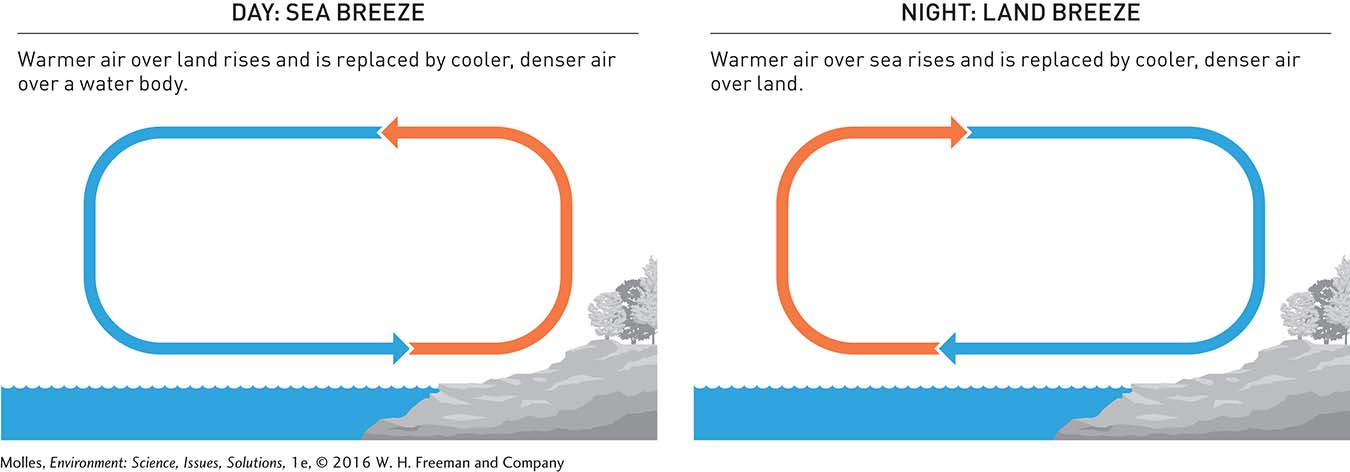
During the day, the land along a shoreline warms more quickly than the nearby water body does. The warm air rises and reduces the atmospheric pressure over land. The resulting gradient in atmospheric pressure causes air to flow from the higher pressure over the sea to the lower pressure over land; that air is called a sea breeze. Rapid cooling of land at night reverses the atmospheric pressure difference between land and sea; thus, the local air flow changes direction, producing a land breeze. Mountain and valley winds are produced in an analogous way, as mountain slopes warm and cool more rapidly than nearby valleys.
303
There are great differences in the amount of wind energy across Earth. For example, wind velocities are higher over the ocean than over land, where winds are slowed by friction (Figure 10.10). Winds blow uninterrupted by land across the Southern Ocean, regularly producing wind velocities of 160 kilometers per hour (100 miles per hour) or more. Consequently, the southern coasts of South America, Africa, and Australia facing the Southern Ocean are exposed to tremendous wind energy. The North Pacific, North Atlantic, and their associated coastlines are also regions of high wind velocities. On land, the areas with highest wind energy are the plains of central North America, and the deserts and plains of central Asia, northern Africa, and Australia.

Water Power

One of the most common surnames in the United States and across Europe is (or means) “Miller.” How does this fact reflect historical energy use?
Water, because of its abundance on Earth, provides many possibilities for power generation. Water power was first used, like wind energy, for a variety of work in manufacturing, including milling grain, processing cloth, forging iron, and sawing stone (Figure 10.11). Today, however, the main use of water power is to generate electricity.
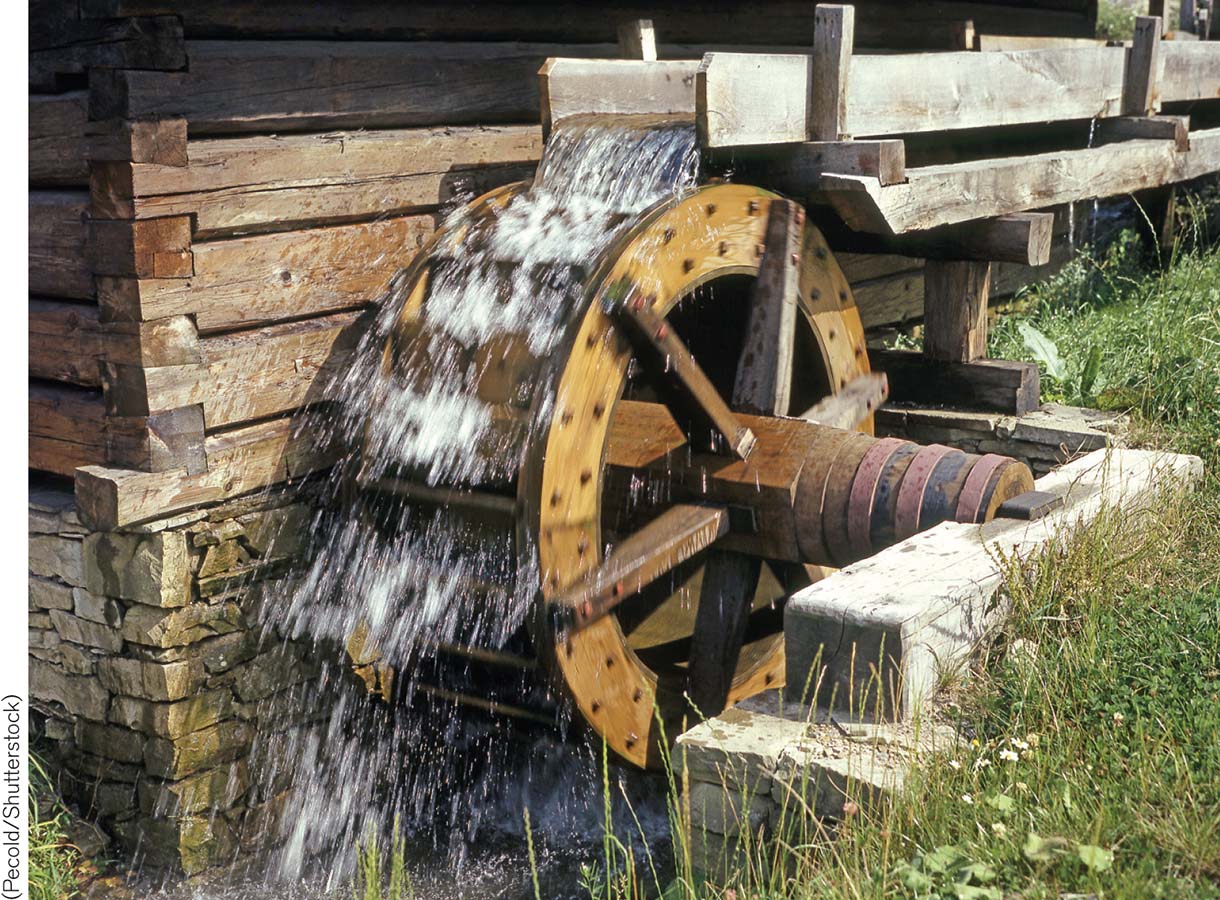

How does the development of wind and water energy to generate electricity echo the time when millers were the high-
hydroelectric power Electricity generated by tapping the energy of water being driven downhill under the force of gravity.
Hydroelectric power is electricity generated by tapping the energy of water being driven downhill under the force of gravity. Beginning in the early 20th century, engineers began damming Earth’s major rivers to provide growing cities with a steady supply of water and electricity (Figure 10.12). Many of these dams were constructed in deep river canyons that become flooded, forming a large water reservoir. These reservoirs can be thought of as a giant battery because they store potential energy, the amount of energy an object has due to the configuration of its parts (see Chapter 2). The amount of potential energy in a reservoir is proportional to the difference in height between the surface of the water and the outflow at the base of the dam. Today, most large-
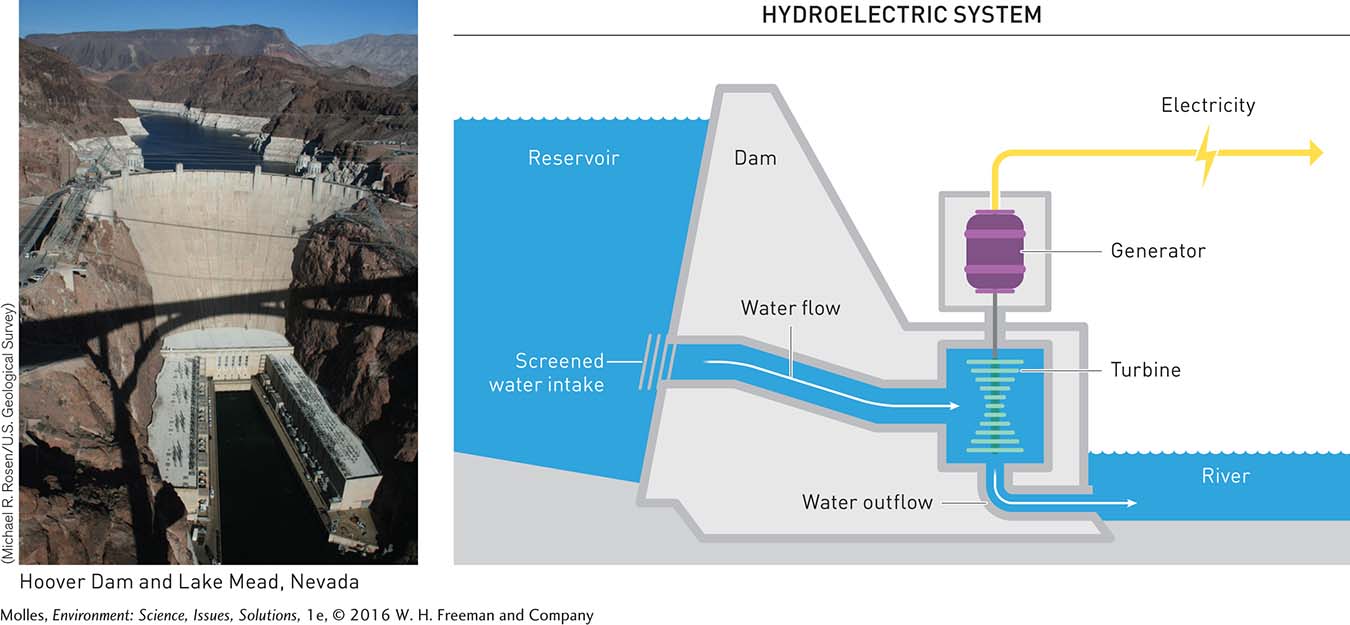
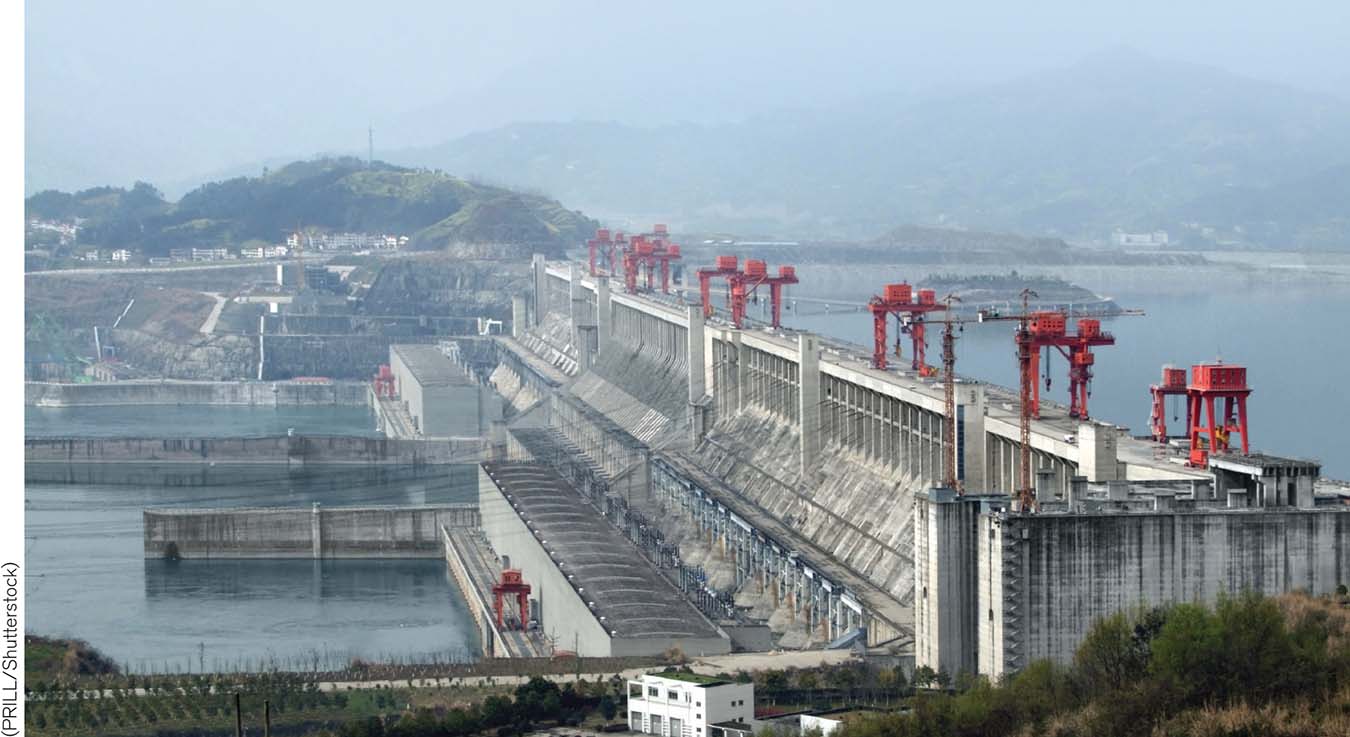
304
hydrokinetic power A form of hydropower in which power stations use the kinetic energy of waves, tidal currents, or river flow to generate electricity.
One form of hydropower, hydrokinetic power, does not rely on reservoirs. Instead, power stations use waterwheels to harness the kinetic energy in rivers and tidal channels, which is the energy of the moving water. The flow in tidal channels is driven by the rise and fall of the tides. Those gravitational forces are strongest, and tidal fluctuations greatest, when the moon and Sun are in alignment, as they are during the full and new phases of the moon. Tidal currents are a highly reliable source of kinetic energy and tidal channels along coastal areas such as New York City’s East River or the Bay of Fundy are being increasingly sought out as a source of water power (Figure 10.14).
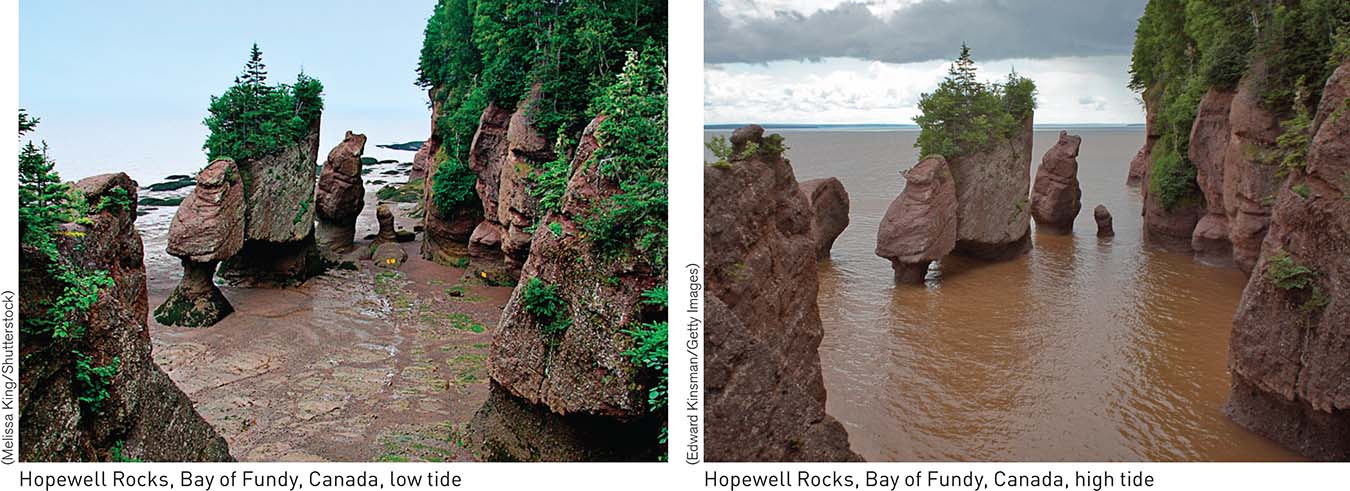
305
Wave Energy
Wind blowing across the ocean produces waves, another source of hydrokinetic power (Figure 10.15). One way to harness wave energy near the shore is to use a buoy that floats on the water surface and is connected to the sea floor. As the ocean rises and falls with each wave, it drives a pump that produces electricity. Other types of wave generators oscillate back and forth with the waves or are mounted on the sea floor and generate electricity from rising and dropping pressure.
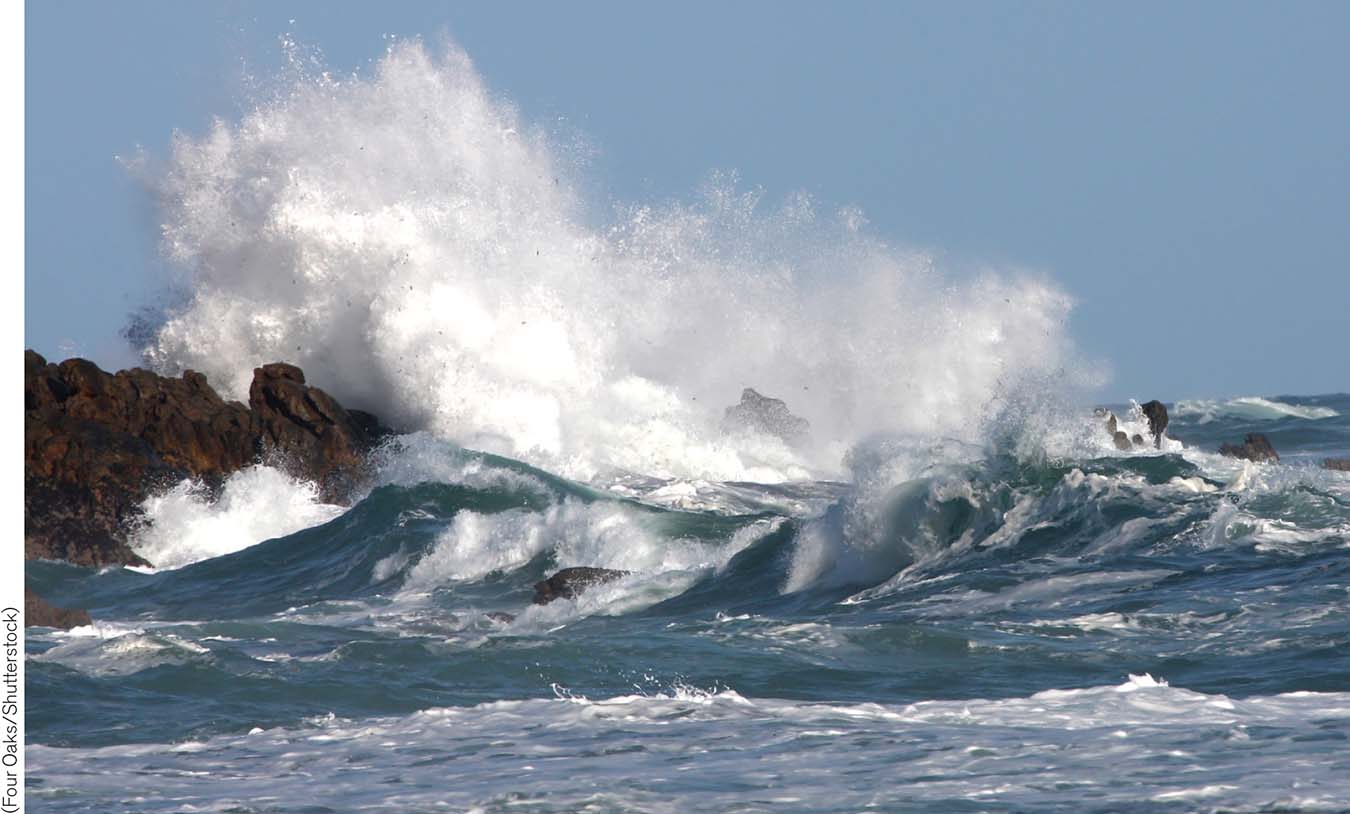
The greatest amounts of wave energy are concentrated on coastlines facing the southern and northern oceans (Figure 10.16). The North Atlantic, under the influence of strong winds coming out of the west, has a well-

Geothermal Energy
306

Could the geothermal resources of Iceland be used to grow tropical plants year round? How?
When a volcano erupts, it gives us a peek at the awesome power contained beneath the surface of Earth. The heat energy produced in Earth’s core by the radioactive decay of chemical elements, such as uranium, is known as geothermal energy. Where accessible near Earth’s surface, it becomes a valuable source of renewable energy.
Geothermal energy is used in two principal ways. Where it heats water that flows to Earth’s surface as hot springs, geothermal energy can heat buildings. For example, all the buildings in Reykjavik, the capital of Iceland, are heated by water from geothermal springs. The second way geothermal energy can be used is to drive electric generators (Figure 10.17).


How is renewable energy availability related to the distribution of natural physical hazards to people and property?
The regions most suitable for developing geothermal energy are “hot spots” that occur at plate boundaries or at places where the crust is thin enough to let the heat through. These are areas of significant volcanic activity, such as the “ring of fire” that encircles the Pacific Ocean (Figure 10.18). Geothermal activity is also intense in areas of sea floor spreading. The mid-
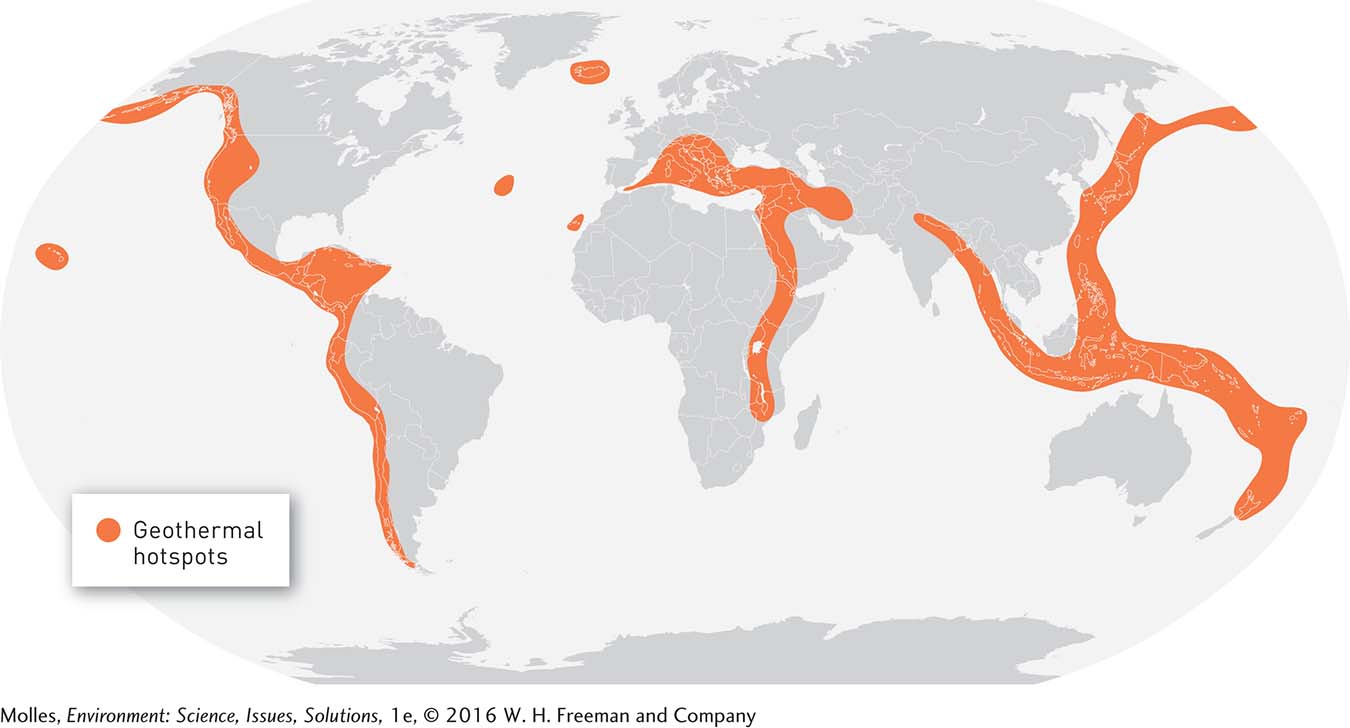
There are three types of geothermal power plants (Figure 10.19). Dry steam plants use the steam from geothermal wells directly to turn generator turbines. The Geysers in northern California, the largest geothermal generating system in the world, is a dry steam plant. Flash steam plants, the most common type in use today, pull deep, high-
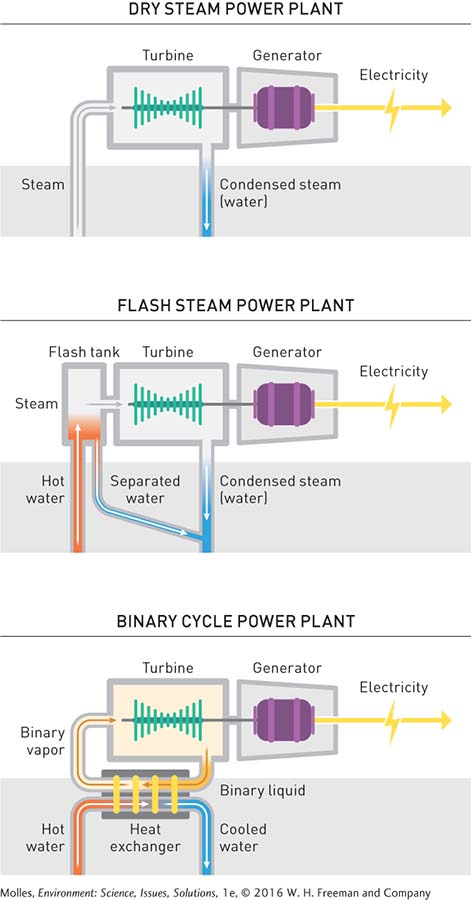

Which form of renewable energy technology is the most technically revolutionary? Explain.
Think About It
Using Figures 10.4 to 10.18, determine which regions have the most, and least, diversity of renewable energy resources.
307
How does the hydrokinetic energy represented by waves in deep water differ from that represented by flowing river water? In what ways are they the same?
Which forms of energy discussed in this section are not ultimately driven by sunlight? Explain.